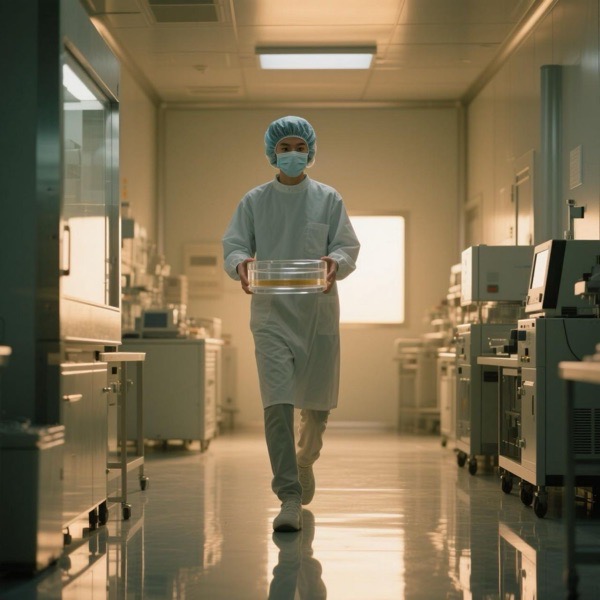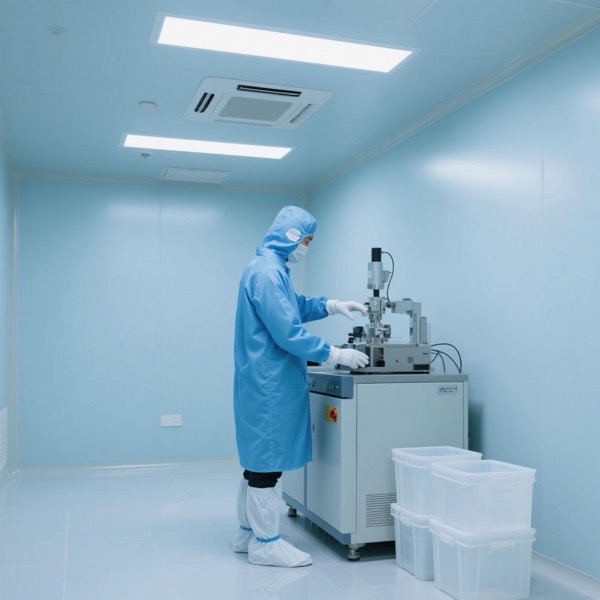In modern industrial and scientific research fields, clean rooms are a special space with extremely high environmental requirements, and their safety and protection are crucial. Cleanrooms are typically used in fields such as the production of high-precision electronic components, pharmaceuticals, and biological experiments that are extremely sensitive to pollutants such as dust and microorganisms. Any small pollution can lead to a decrease in product quality or experimental failure, and even cause safety accidents.

Detailed introduction to special safety and protection methods for clean rooms
Equip with personal protective equipment. The staff entering the clean room must wear a full set of clean clothes, including masks, hair masks, gloves, clean shoes, etc. The design of these devices aims to minimize the entry of dust and microorganisms generated by the human body into the clean room environment. For example, cleanroom clothes are usually made of special materials that have low hair dust, are not prone to peeling or breakage, and can cover all hair, beard, and feet. At the same time, according to different work scenarios, it is necessary to wear corresponding protective glasses, face masks, or respirators to protect workers from chemical substances, harmful gases, or biological agents.
Strict control of personal hygiene is crucial for maintaining the cleanliness of the cleanroom. Staff must thoroughly clean the cleanroom before entering, including showering, washing hands, etc. Smoking, eating, and drinking are strictly prohibited in clean rooms, as these behaviors may generate a large amount of dust and microorganisms. At the same time, personnel entering the clean room are not allowed to leave long nails and use cosmetics and perfume, because the chemical components in cosmetics and perfume may volatilize and pollute the clean room environment.
Using anti-static measures, static electricity It is a potential source of danger in clean rooms, which may cause damage to electronic components or trigger safety accidents such as fires and explosions. To prevent the generation and accumulation of static electricity, a static elimination device should be installed in the clean room. Staff are required to wear anti-static clothing and shoes, which are usually made of special conductive fibers that can promptly dissipate static electricity generated by the human body. In addition, anti-static materials should be used for the floors, walls, and equipment in the cleanroom, and a good grounding system should be ensured to form a complete static discharge path.
Pay attention to fire and explosion prevention Many materials and processes in clean rooms pose a risk of fire and explosion, making fire and explosion prevention measures crucial. In terms of building structure, it is necessary to improve the fire resistance level of the factory building by using firewalls, fireproof partitions, and non combustible or flame-retardant materials for decoration. Reasonably plan the layout of the clean room, maintain a safe distance between flammable and explosive materials and fire and heat sources, and set up explosion-proof facilities such as explosion-proof walls, doors, and windows. At the same time, equipped with comprehensive fire-fighting facilities such as fire water supply system, automatic sprinkler system, fire extinguishers, and fire alarm system.
Standardize the management of chemical substances Various chemicals such as acids, bases, solvents, etc. are often used in clean rooms. If these chemicals are used improperly or leaked, they may cause serious harm to personnel and the environment. Therefore, strict management of chemical substances is necessary. All chemical substances should be stored in dedicated storage areas and classified according to their properties. When using chemical substances, staff must undergo professional training, understand their properties and safety operating procedures, and operate in a well ventilated environment, such as in a fume hood or designated laboratory bench. At the same time, corresponding emergency response equipment should be equipped, such as eye wash stations, showers, etc., so that timely treatment can be carried out in case of chemical substance leakage or contact with the human body.
Conduct environmental monitoring and equipment maintenance Regularly monitor the environment of the cleanroom, including parameters such as air cleanliness, temperature, humidity, and pressure difference, to ensure compliance with relevant standards and requirements. At the same time, regular maintenance and repairs should be carried out on the equipment in the clean room to ensure its normal operation and avoid pollution or safety accidents caused by equipment failures. For example, the filter of air purification equipment needs to be replaced regularly to ensure its filtering effect; Electrical equipment needs to be regularly inspected to prevent electrical failures from causing fires.
Improve emergency response plans Despite implementing a series of safety measures, there is still a possibility of unexpected accidents such as fires, chemical spills, and contamination from biological agents. Therefore, it is necessary to develop a comprehensive emergency response plan and conduct regular drills to improve the ability of staff to respond to sudden accidents. The emergency response plan should include alarm procedures, personnel evacuation routes, emergency rescue measures, and other contents in case of accidents. Clear evacuation signs and emergency lighting facilities should be installed in the clean room to enable personnel to evacuate quickly in emergency situations.
The special safety and protection methods of clean rooms are a systematic project that requires comprehensive management and control from multiple aspects such as personnel, equipment, and environment. Only by strictly adhering to relevant safety operating procedures and protective measures can the safe operation of clean rooms be ensured, providing reliable guarantees for the production and scientific research experiments of high-precision products.
Post time: Apr-23-2025

